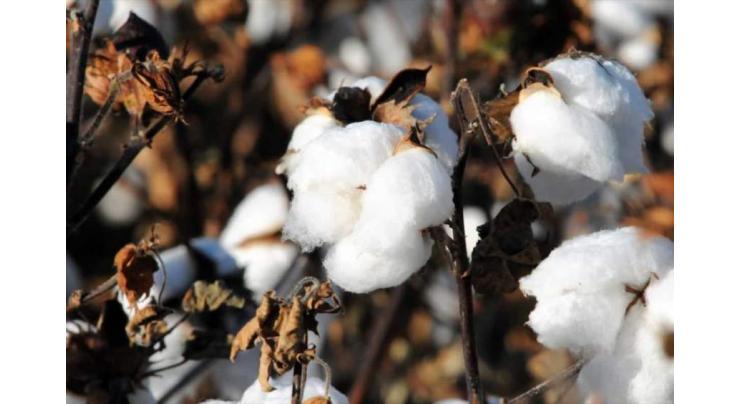
Balanced Application Of Fertilizers Recommended For Better Cotton Production
Mohammad Ali (@ChaudhryMAli88) Published May 11, 2022 | 06:51 PM

Farmers must get soil analyzed from laboratory to get knowledge of soil strength and weaknesses to ensure balanced application of fertilizers for healthier cotton production, said the spokesman of Agriculture Department on Wednesday
MULTAN, (UrduPoint / Pakistan Point News - 11th May, 2022 ) :Farmers must get soil analyzed from laboratory to get knowledge of soil strength and weaknesses to ensure balanced application of fertilizers for healthier cotton production, said the spokesman of Agriculture Department on Wednesday. He said that need-based or balanced application of fertilizers could increase cotton production by 25-30 percent.
He said that farmers having weaker soil must apply 1.75 bags of DAP, 3.5 bags of Urea, 1.5 bag of SOP or MOP per acre and the soil with medium strength would need 1.5 bags of DAP, 3.25 bags of Urea, 1.5 bag of SOP or 1.25 bags of MOP. The spokesman added that the fertile land should get 1.25 bag of DAP, 3 bags of Urea, 1.5 bags of SOP or 1.25 bags of MOP. The recommendation is meant for main cotton sowing areas including Multan, Khanewal, Vehari, Lodhran, Bahawalnagar, Bahawalpur, DG Khan, Rajanpur, Muzaffargarh, Layyah, Sahiwal and Rahim Yar Khan, he told.
The spokesman also prescribed fertilizers application in secondary cotton sowing areas including Faisalabad, Toba Tek Singh, Jhang, Bakhar, Mianwali, Kasur, Okara and Pakpattan.
He said that weak soil in secondary cotton areas should get 1.75 bags of DAP, 3.25 bags of Urea, 1.25 bags of SOP or one bag of MOP. Medium fertile land should get 1.5 bags of DAP, 3 bags of Urea, 1.25 bags of SOP or one bag of MOP. Fertile land should get 1.25 bags of DAP, 2.5 bags of Urea, 1.25 bags of SOP or a bag of MOP.
Farmers should apply full recommended quantity of potassium and phosphorous fertilizers at the time of sowing. However, in case of Nitrogen, one-third be applied at the time of sowing, one-third at buds formation and remaining at flower stage, he added.
Related Topics
Recent Stories

Finance Minister reiterates determination to make business environment more cond ..

SC all set to take up govt pleas challenging ruling against NAB amendments

Islamabad, Rawalpindi weather update: Rain breaks heat wave

PM calls for urgent steps to make exports more competitive

Interior Minister visits site of under construction Jail in Islamabad

Currency Rate In Pakistan - Dollar, Euro, Pound, Riyal Rates On 10 May 2024

Today Gold Rate in Pakistan 10 May 2024

London, Frankfurt stocks hit record highs on rate-cut hopes

May 9 culprits must be brought to logical end: Hanif Abbasi

Sanchez escapes through dust and gravel for nervy Giro triumph

Balochistan Assembly passes resolution to condemn May 9 attacks

Spain govt vows to block hostile BBVA bid for rival bank
More Stories From Pakistan
-
Experts call for Pak-China joint council on agri development under CPEC
10 minutes ago -
PSCA reunites elderly person with family
20 minutes ago -
Governor vows to perform constitutional role for solution of peoples’ problems
20 minutes ago -
PFA seizes 700-litre spurious juice, 107-kg expired flavours
20 minutes ago -
Prof Khalid Gondal elected convener of PHC committee
20 minutes ago -
Hot, dry weather forecast for Sindh
30 minutes ago
-
CDA chairman inspects ongoing development projects
40 minutes ago -
Hatchlings released into river Indus to save endangered fish, enrich diversified aqua culture
40 minutes ago -
Province’s development link with maintenance of law & order: KP Governor
40 minutes ago -
PESCO Chief calls on KP Governor
50 minutes ago -
Strict action to take against profiteers: AC Sukkur
50 minutes ago -
IBGE hosts sports festival 2024
50 minutes ago